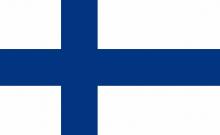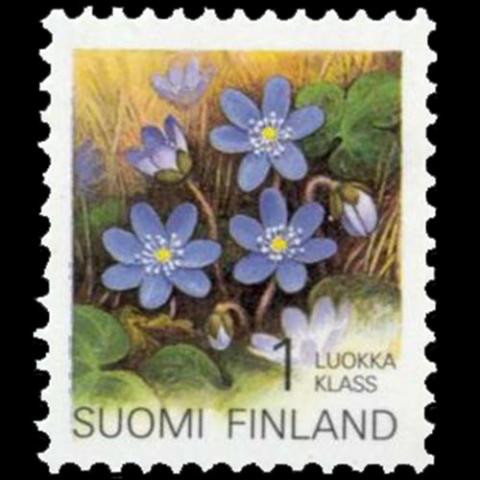Capital: Helsinki
Finland (Finnish: Suomi [ˈsuo̯mi]; Swedish: Finland [ˈfɪ̌nland], Finland Swedish: [ˈfinlɑnd]), officially the Republic of Finland (Finnish: Suomen tasavalta, Swedish: Republiken Finland is a Nordic country located in Northern Europe. Finland shares land borders with Sweden to the west, Russia to the east, and Norway to the north and is defined by the Gulf of Bothnia to the west and the Gulf of Finland to the south that are part of the Baltic Sea.
Finland has a population of approximately 5.5 million, making it the 25th-most populous country in Europe. The main language is Finnish, a Finnic language of the Uralic language family. Swedish is the second official language of Finland, and is mainly spoken in certain coastal areas of the country and on Åland. Finland is a parliamentary republic consisting of 19 regions and 310 municipalities. The climate varies significantly relative to latitude, from Southern Finland's humid continental climate to the boreal climate of the north. Finland is primarily a boreal forest biome, with more than 180,000 recorded lakes, leading to the denomination "the land of a thousand lakes". With an area of 338,455 square kilometers (130,678 sq mi), Finland is the eighth-largest country in Europe, and the most sparsely populated country in the European Union. Helsinki, the capital of Finland, is the largest metropolitan area with over 1.5 million people, which produces a third of the country's GDP. Tampere and Turku are the next largest urban areas.
Finland was inhabited around 9000 BC after the Last Glacial Period. The Stone Age introduced several different ceramic styles and cultures. The Bronze Age and Iron Age were characterized by extensive contacts with other cultures in Fennoscandia and the Baltic region. From the late 13th century, Finland gradually became an integral part of Sweden as a consequence of the Northern Crusades, the legacy of which is reflected in the prevalence of the Swedish language and its official status. In 1809, as a result of the Finnish War, Finland was annexed by the Russian Empire as the autonomous Grand Duchy of Finland, during which Finnish art flourished and the idea of independence began to take hold. In 1906, Finland became the first European state to grant all adult citizens the right to vote, and the first in the world to give all adult citizens the right to run for public office. Nicholas II, the last Tsar of Russian Empire, tried to russify Finland and also terminate its political autonomy, but after the 1917 Russian Revolution, Finland declared itself independent from the empire. In 1918, the fledgling state was divided by the Finnish Civil War. During World War II, Finland fought the Soviet Union in the Winter War and the Continuation War, and Nazi Germany in the Lapland War. After the wars, Finland lost part of its territory, but maintained its independence.
Finland largely remained an agrarian country until the 1950s. After World War II, the country rapidly industrialized and developed an advanced economy, while building an extensive welfare state based on the Nordic model, resulting in widespread prosperity and a high per capita income. Finland joined the United Nations in 1955 and adopted an official policy of neutrality. Finland joined the OECD in 1969, the NATO Partnership for Peace in 1994,[19] the European Union in 1995, the Euro-Atlantic Partnership Council in 1997, and the Eurozone at its inception in 1999.
Finland is a top performer in numerous metrics of national performance, including education, economic competitiveness, civil liberties, quality of life and human development. In 2015, Finland was ranked first in the World Human Capital and the Press Freedom Index and as the most stable country in the world during 2011–2016 in the Fragile States Index, and second in the Global Gender Gap Report. It also ranked first on the World Happiness Report report for 2018, 2019 and 2020.
Reference: Wikipedia


